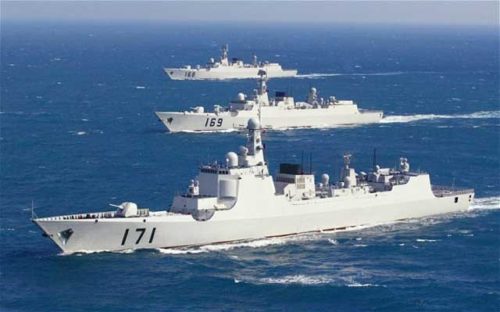
The United States on Wednesday sent two Navy ships through the Taiwan Strait in the third such operation this year, further heightening tensions with China.
This is as the U.S. military increases the frequency of transits through the strategic waterway despite opposition from China.
“The ships’ transit through the Taiwan Strait demonstrates the U.S. commitment to a free and open Indo-Pacific,” U.S. Pacific Fleet said in a statement. “The U.S. Navy will continue to fly, sail and operate anywhere international law allows.”
It said the passage was carried out by the destroyer USS Stockdale and the Pecos, a replenishment vessel.
Taiwan’s Defense Ministry said it was a normal transit through international waters in the Taiwan Strait and that Taiwanese forces had monitored the passage of the ships.
China’s Foreign Ministry spokesman, Geng Shuang, said at a regular briefing on Thursday that Beijing had expressed its concerns over the passage to the United States.
“We urge the United States to cautiously and appropriately handle the Taiwan issue, avoid damaging the peace and stability of the Taiwan Strait and China-U.S. relations,” he said.
The latest move comes ahead of an expected meeting between Trump and Chinese President, Xi Jinping, this week in Argentina on the sidelines of a G20 summit.
The U.S. Navy conducted a similar mission in the strait’s international waters in July, which had been the first such voyage in about a year.
The latest operation shows the U.S. Navy is increasing the pace of strait passages.
Washington has no formal ties with Taiwan, but is bound by law to help it defend itself and is the island’s main source of arms. The Pentagon says Washington has sold Taiwan more than $15 billion in weaponry since 2010.
China has been ramping up pressure to assert its sovereignty over the island, which it considers a breakaway province of “one China.”
Taiwan is only one of a growing number of flash points in the U.S.-China relationship, which also include a trade war, U.S. sanctions and China’s increasingly muscular military posture in the South China Sea.